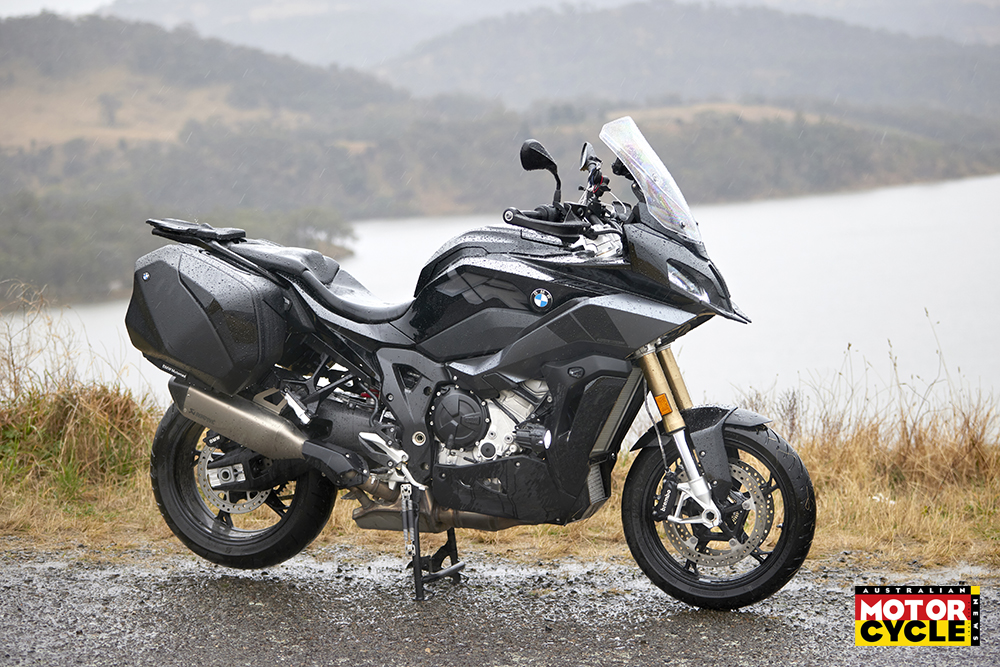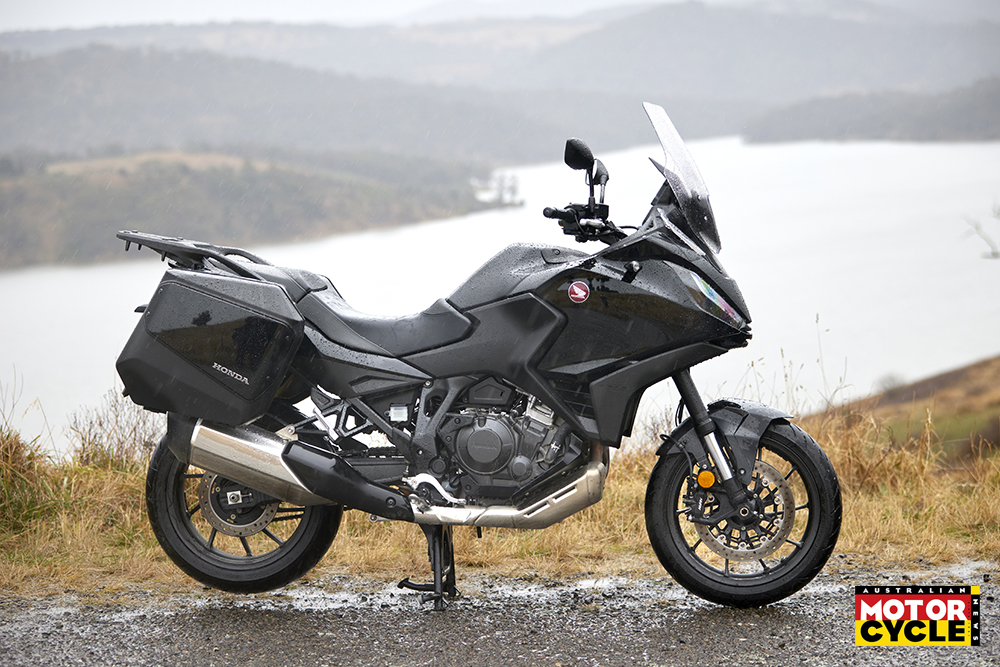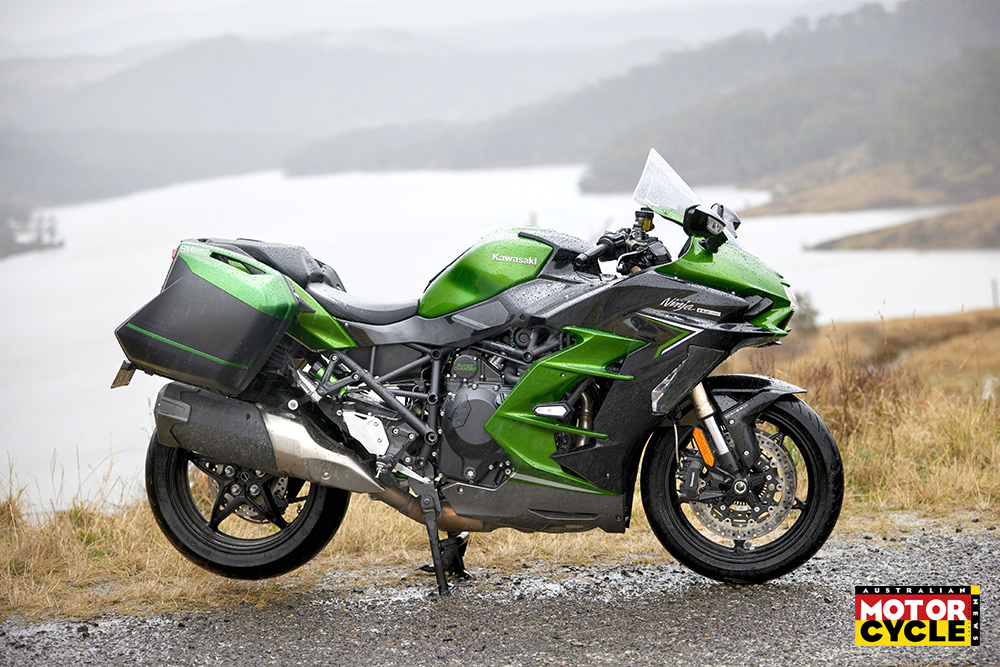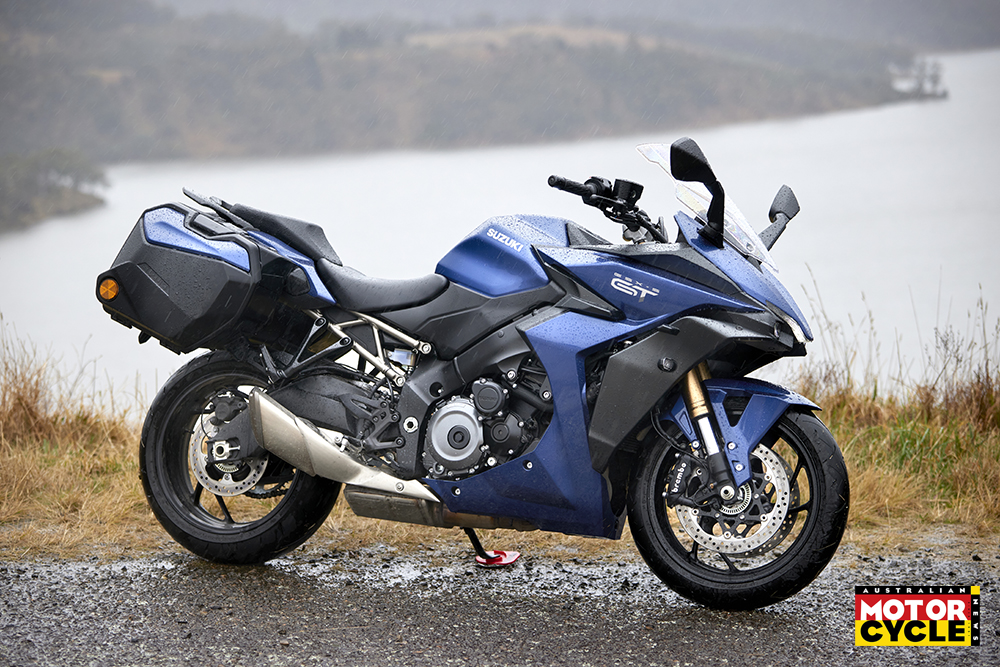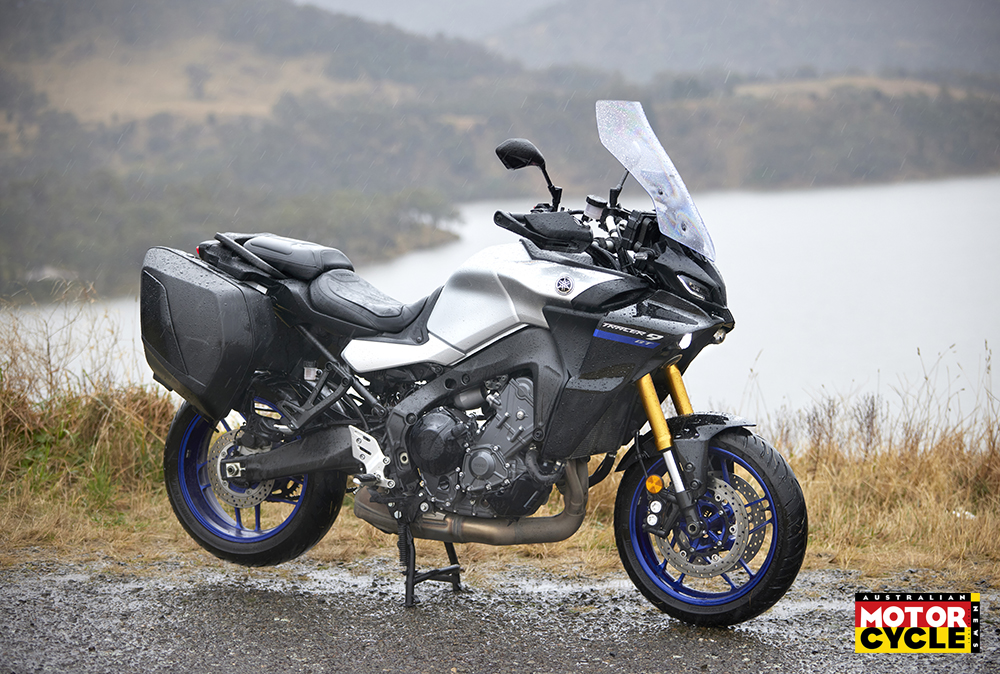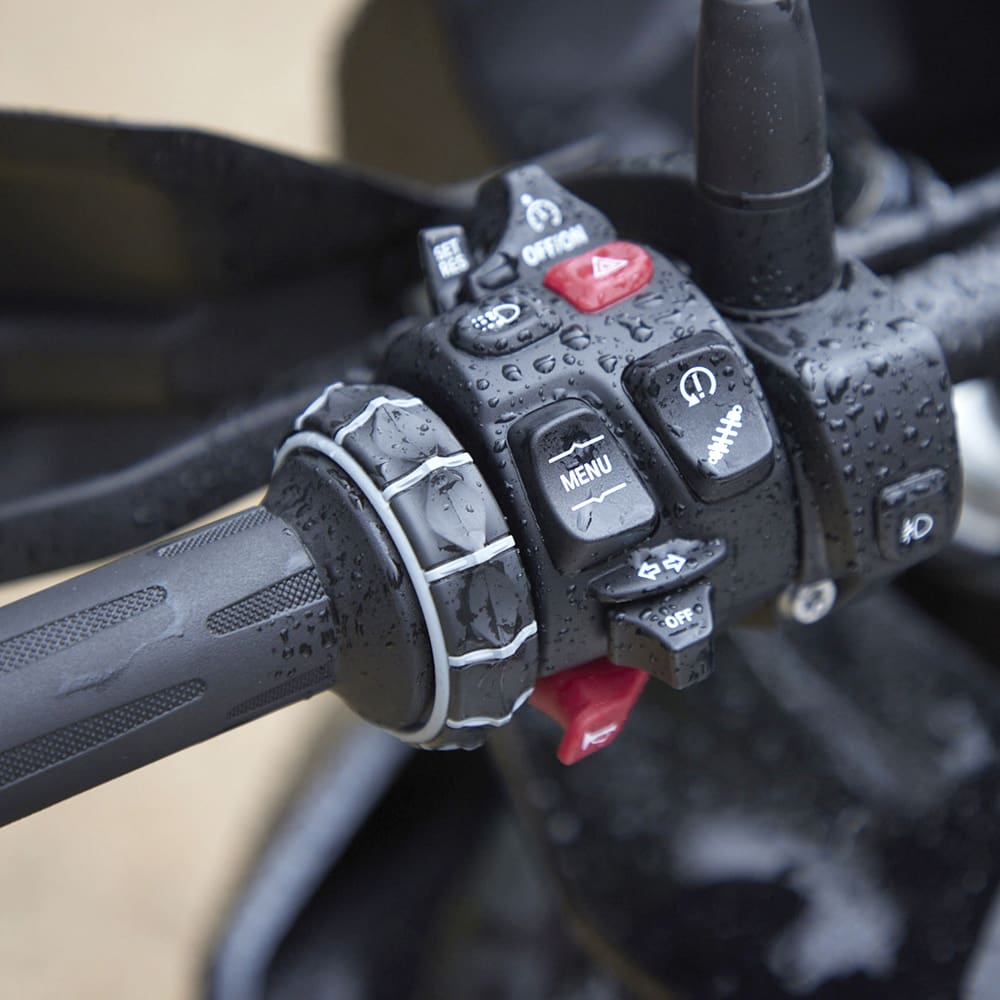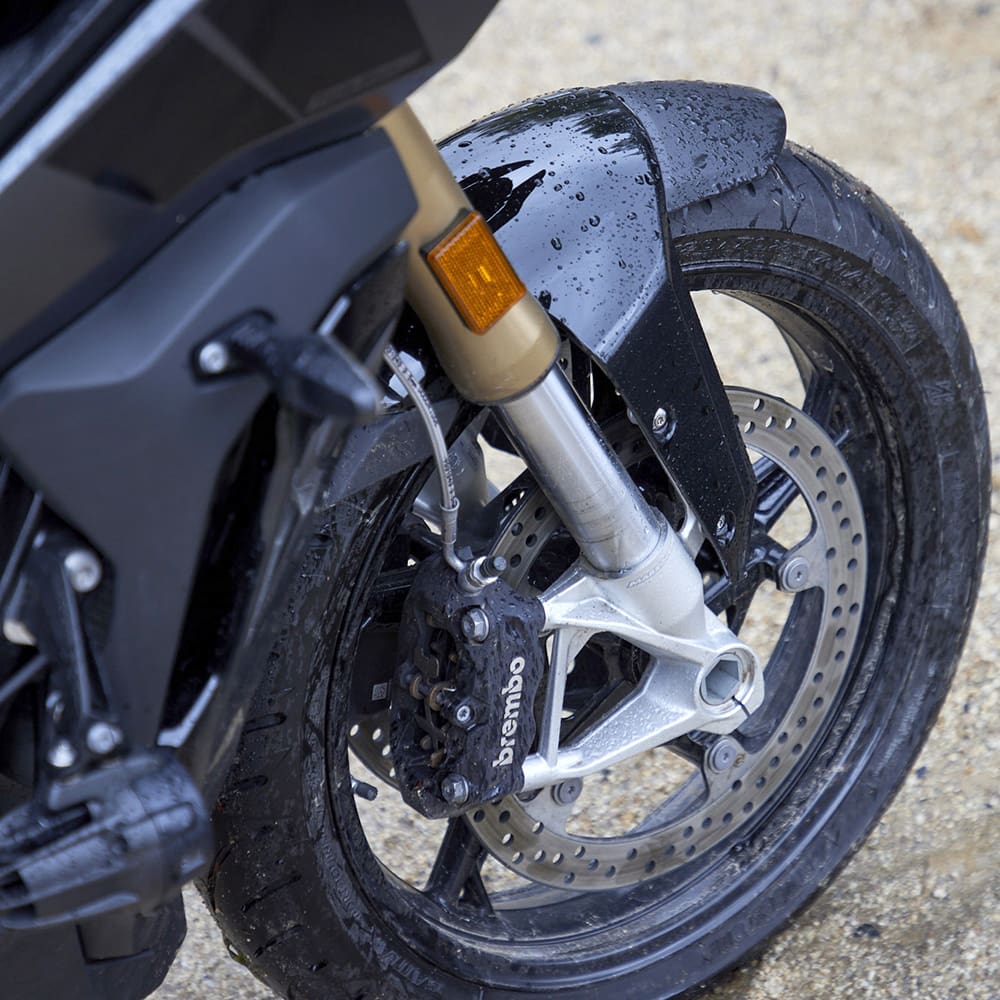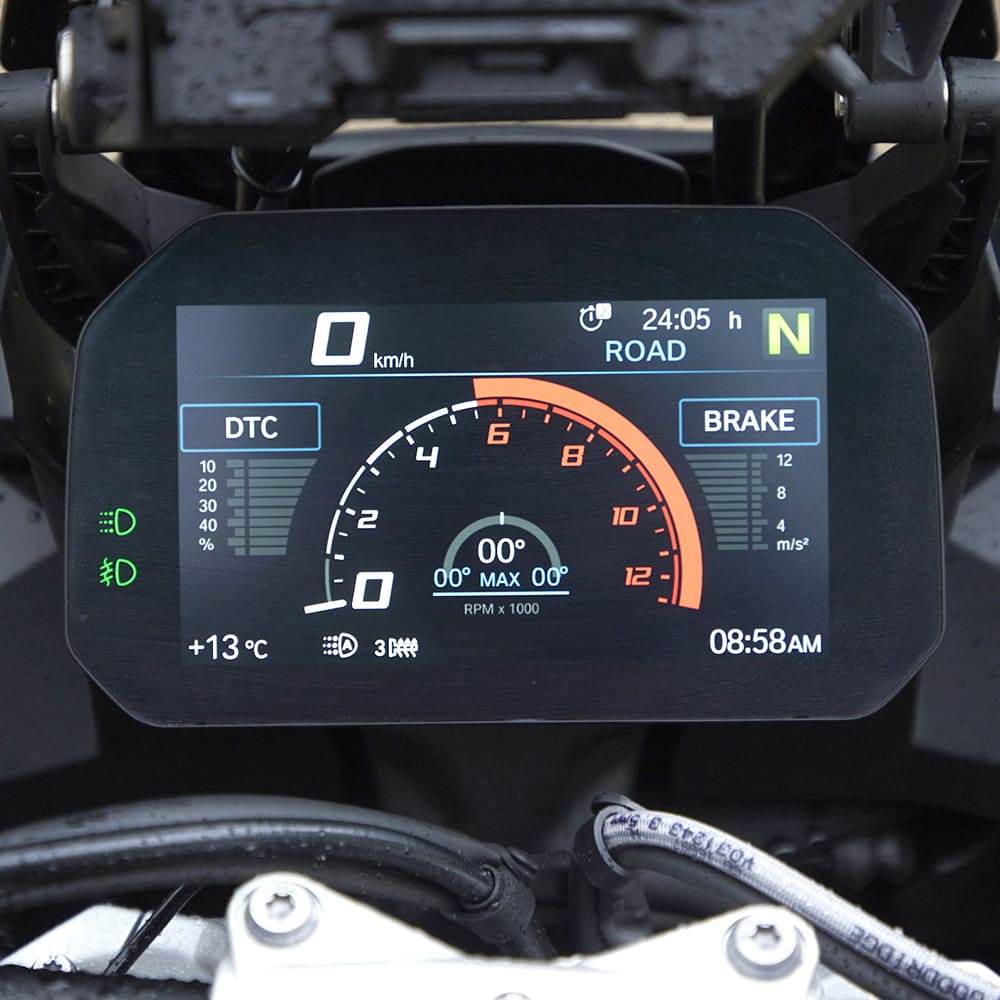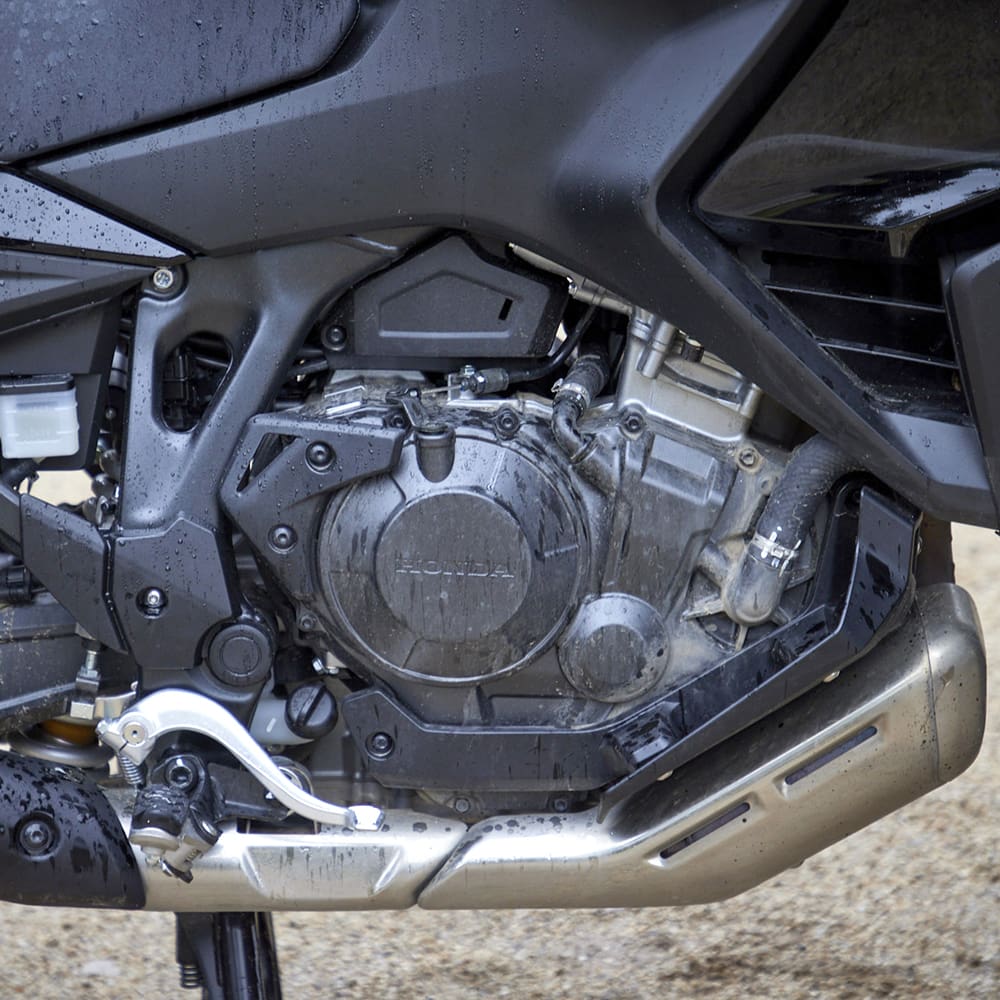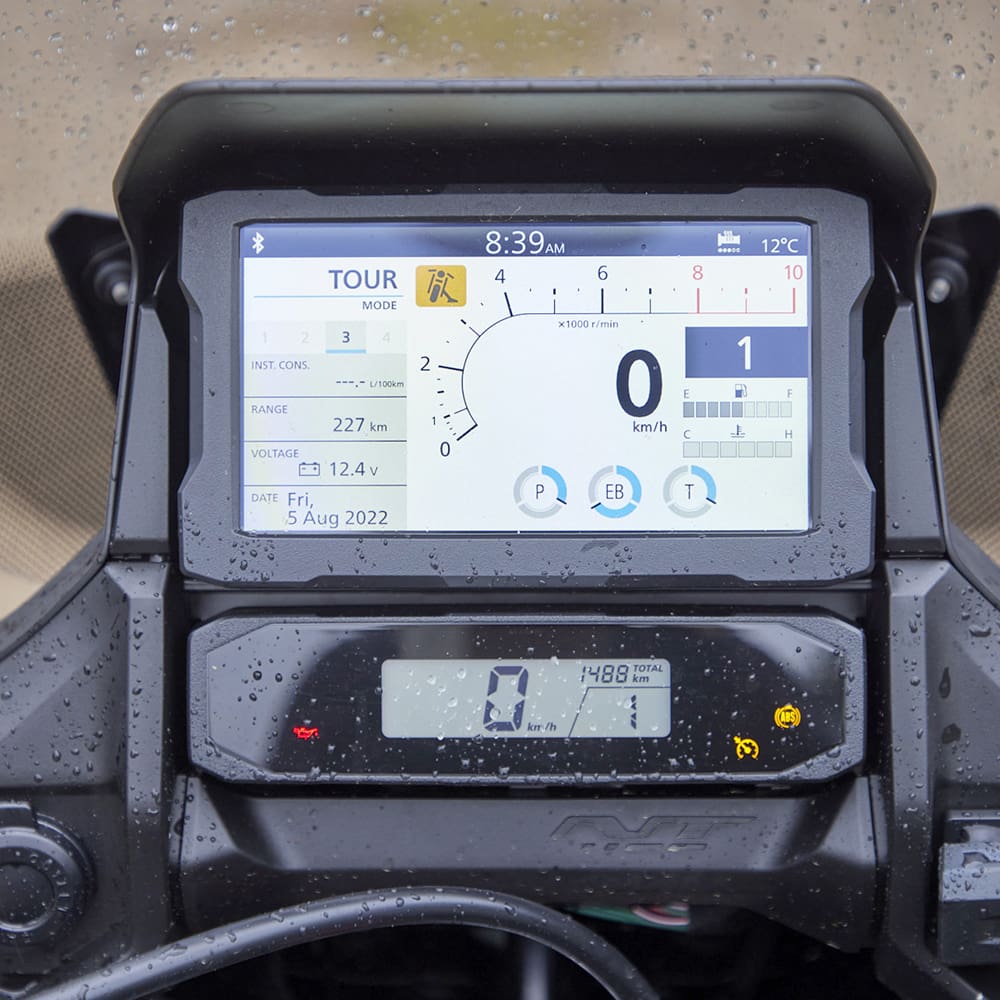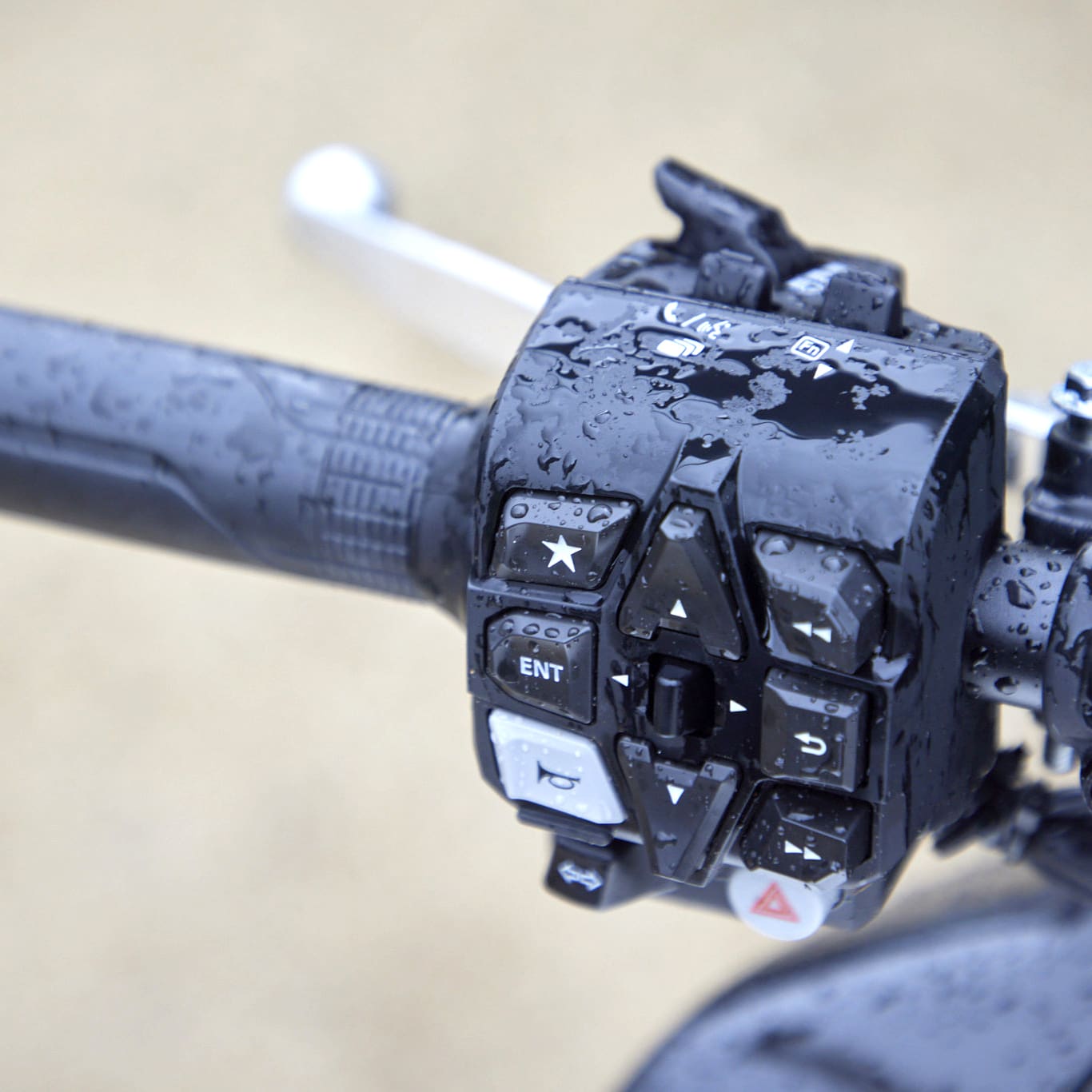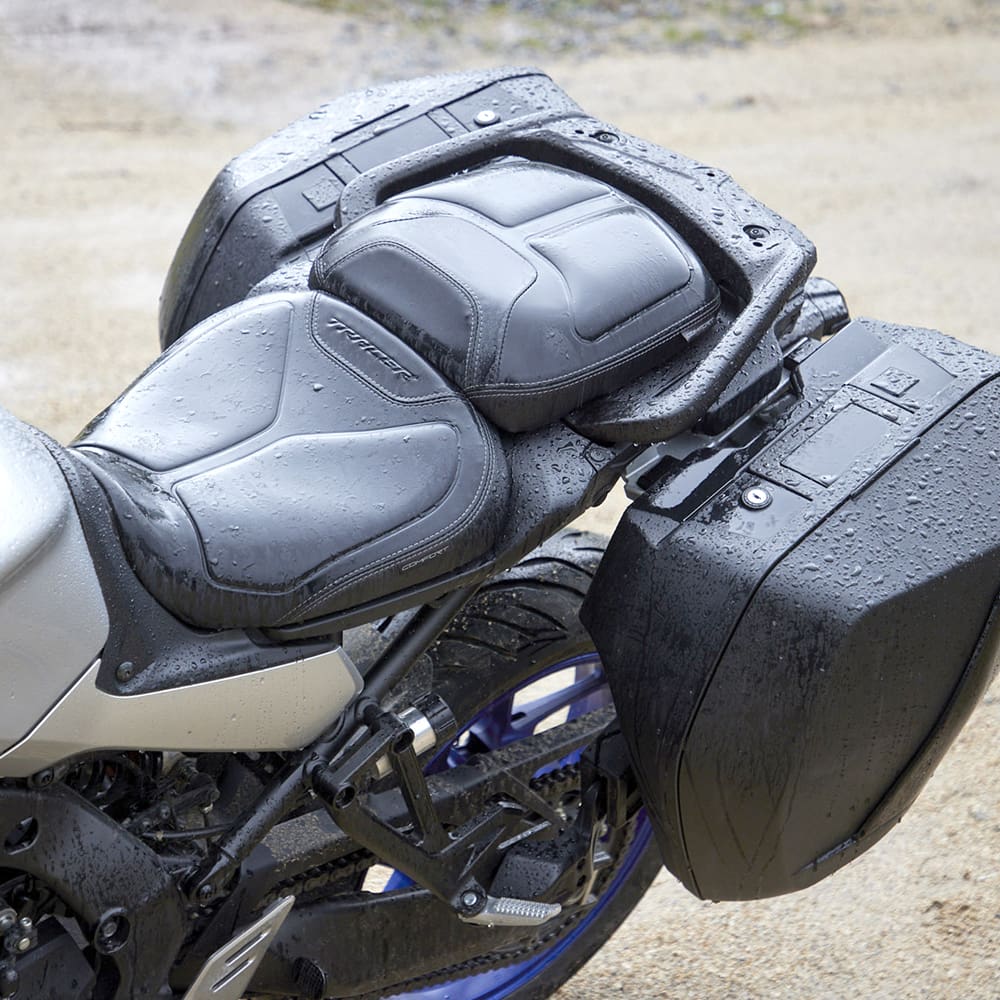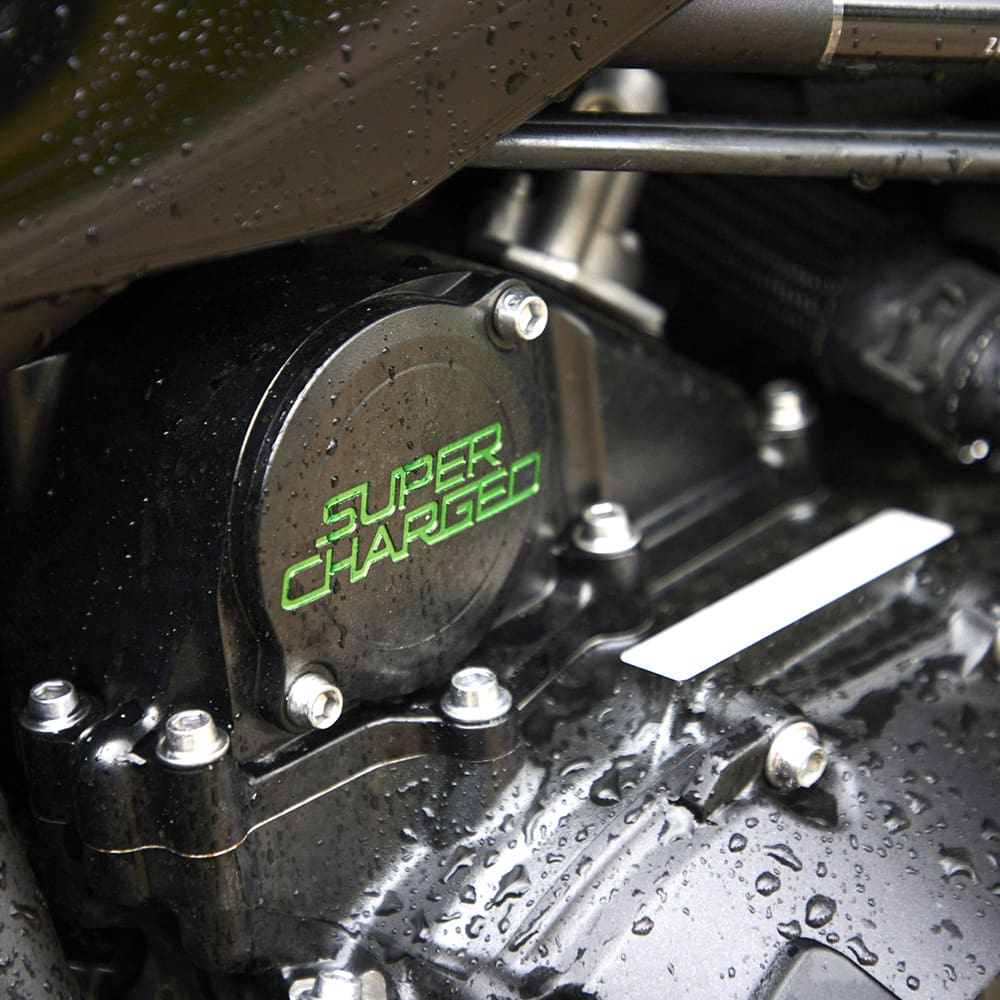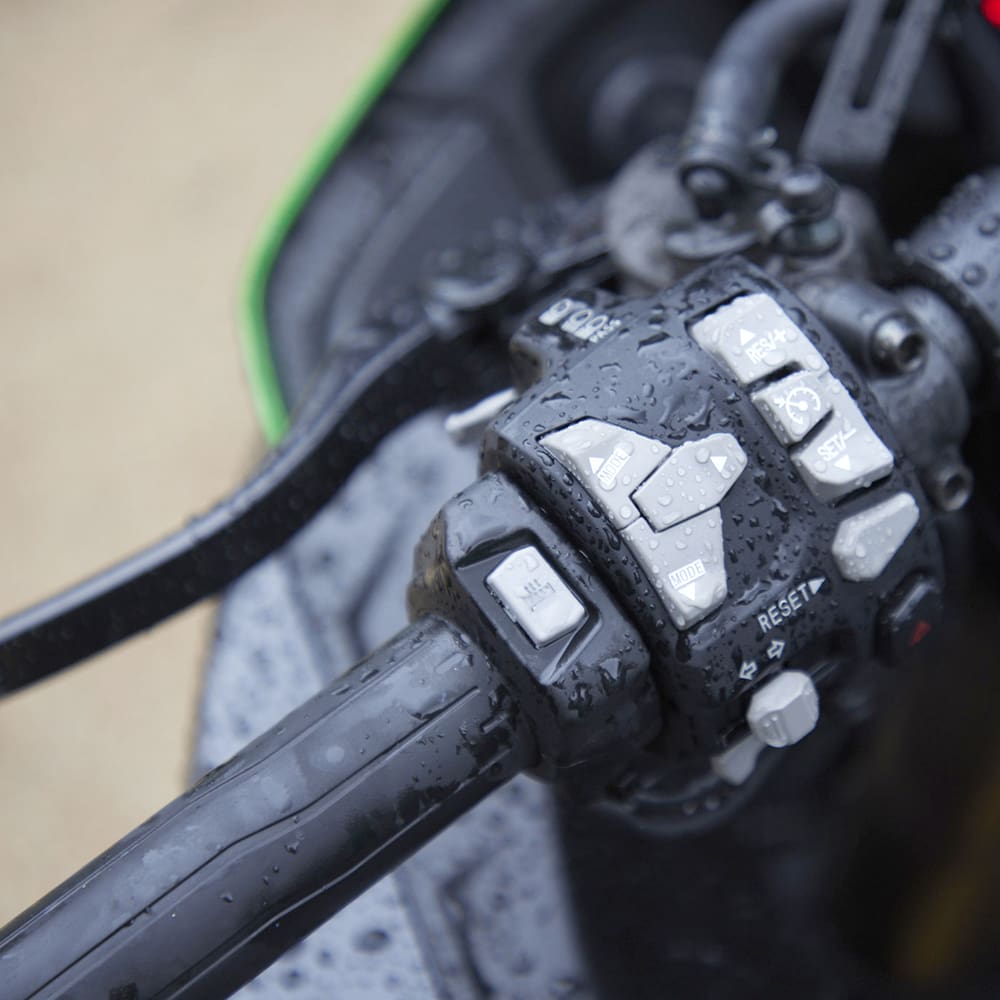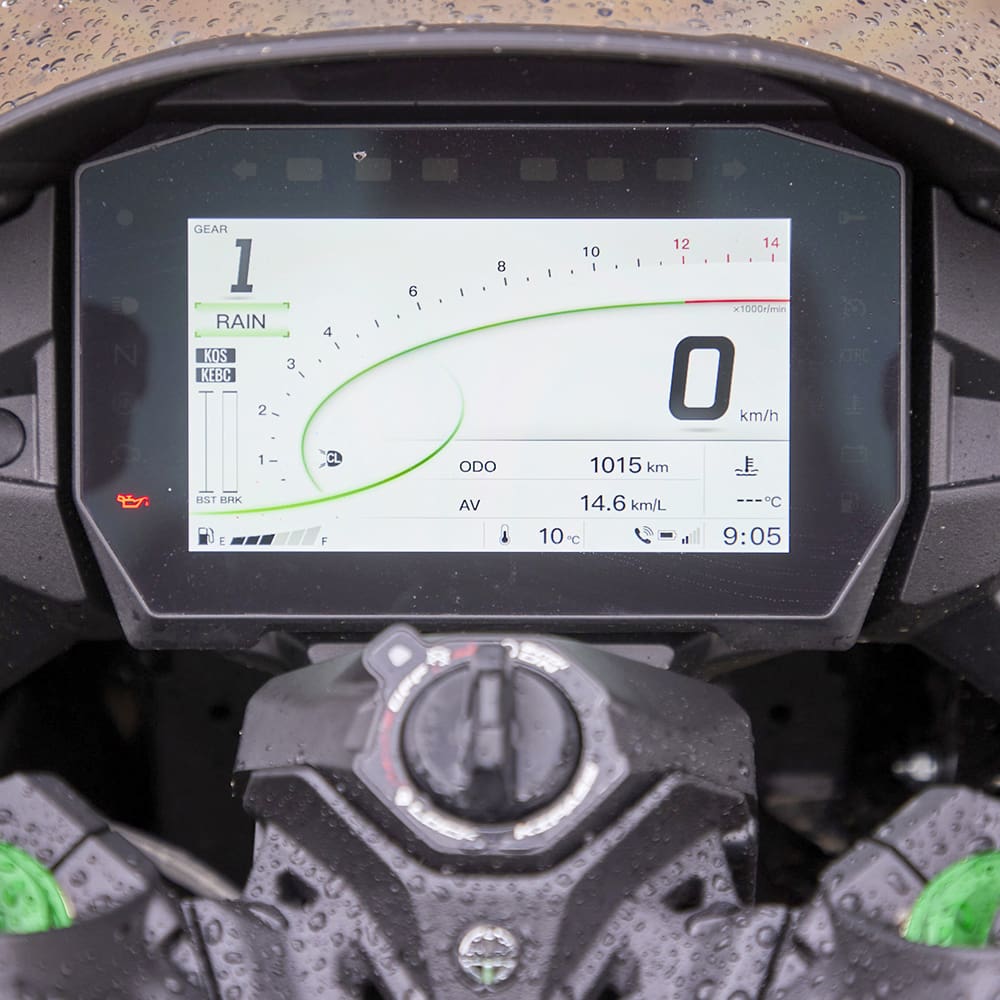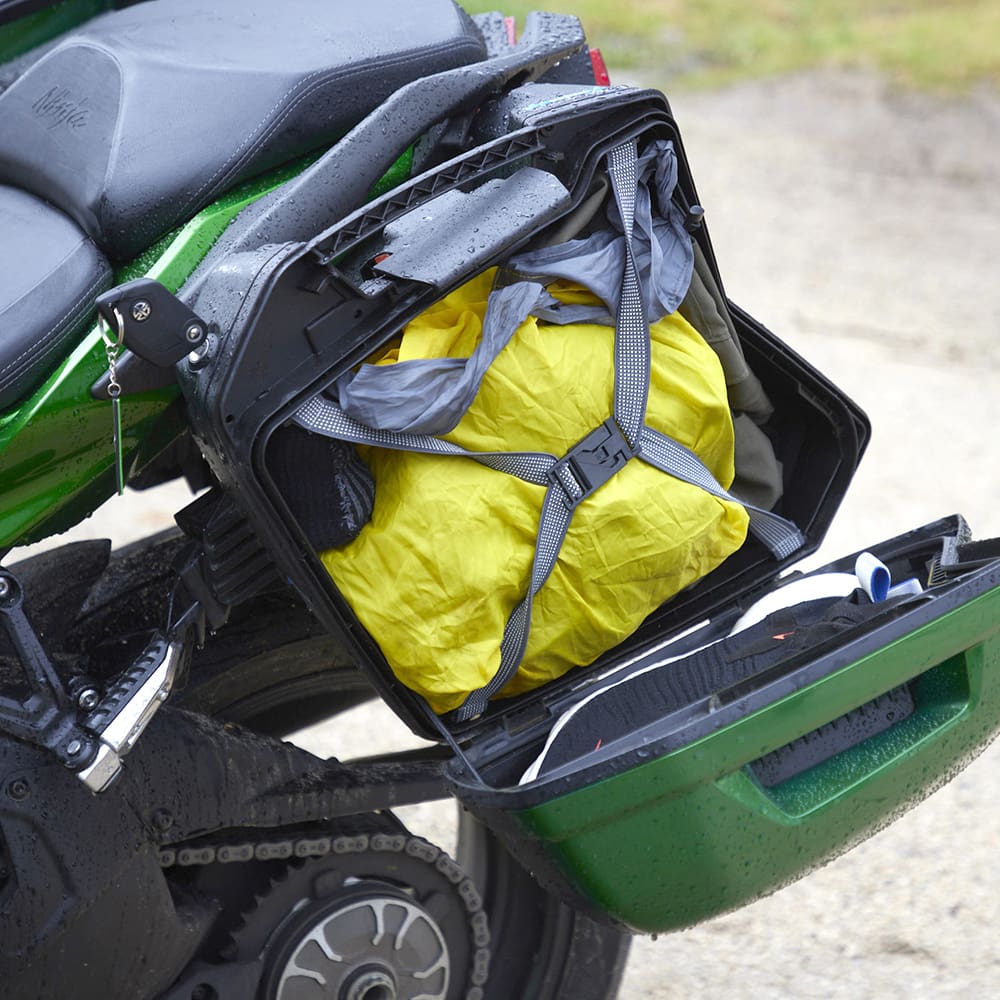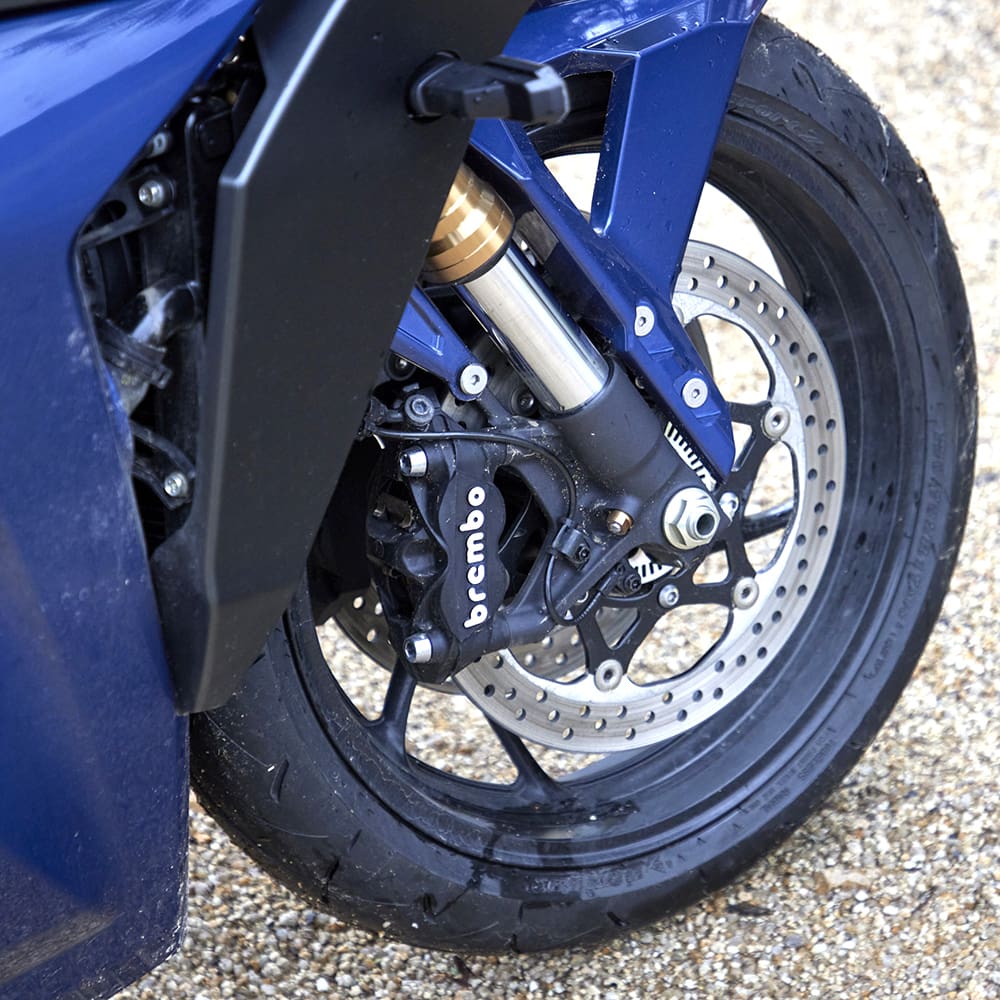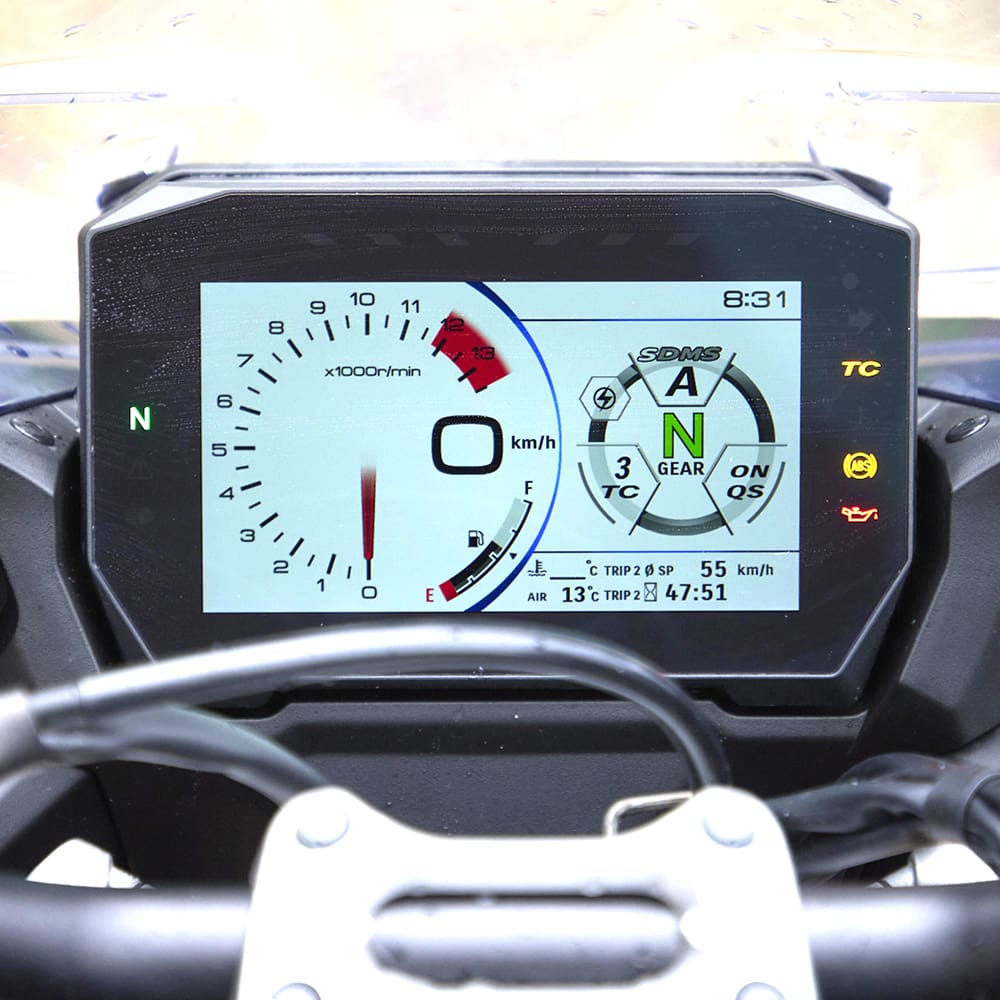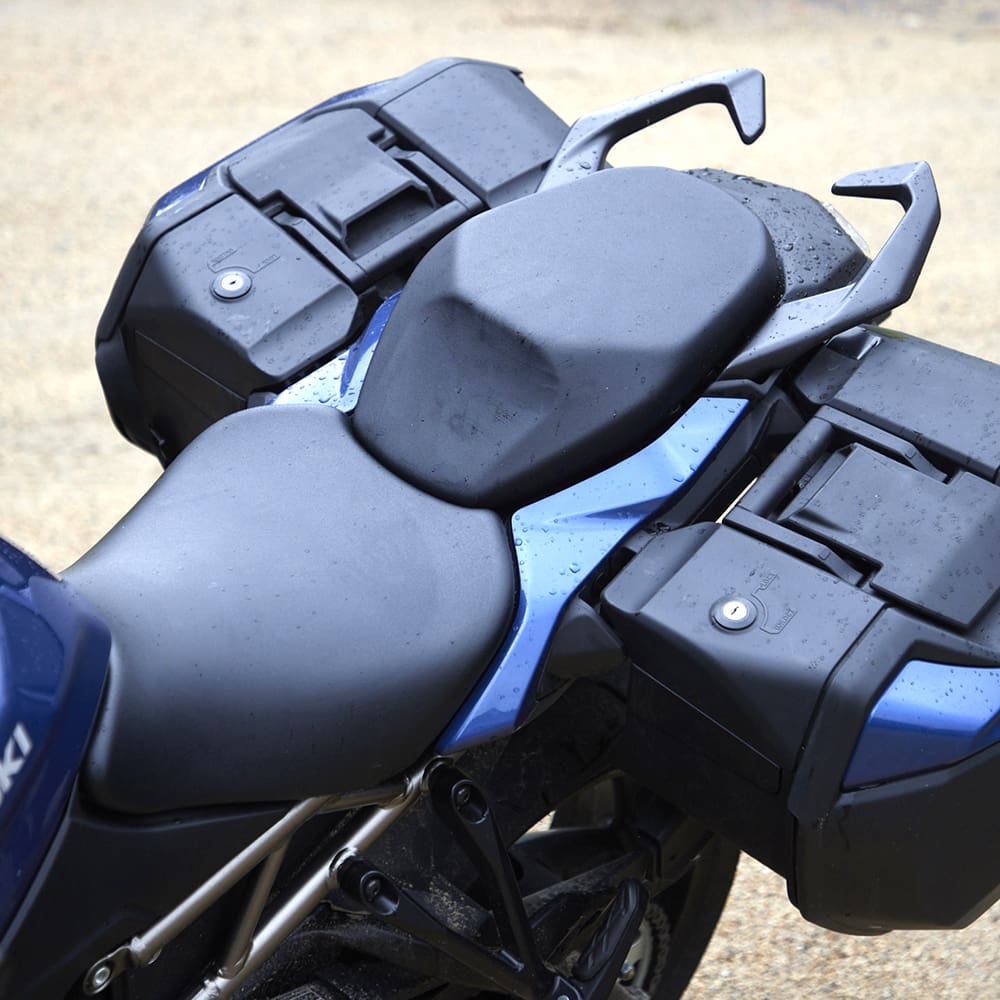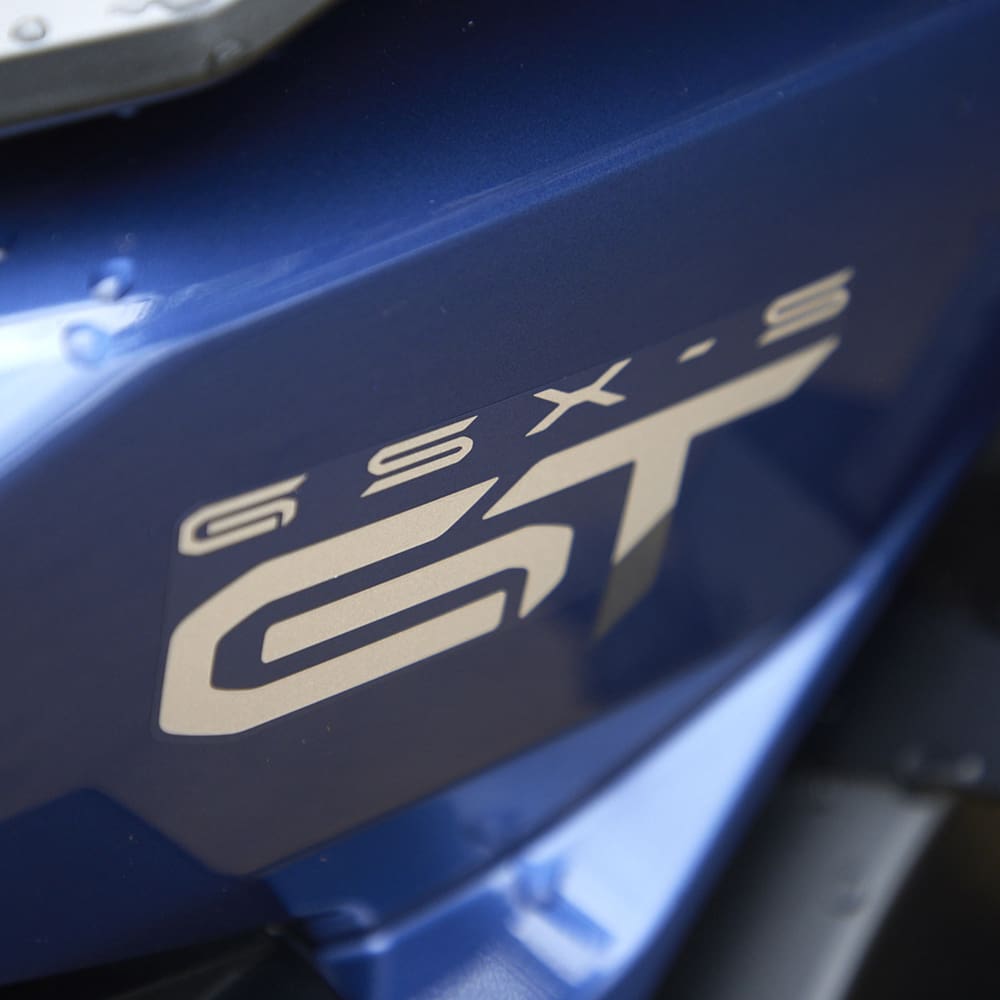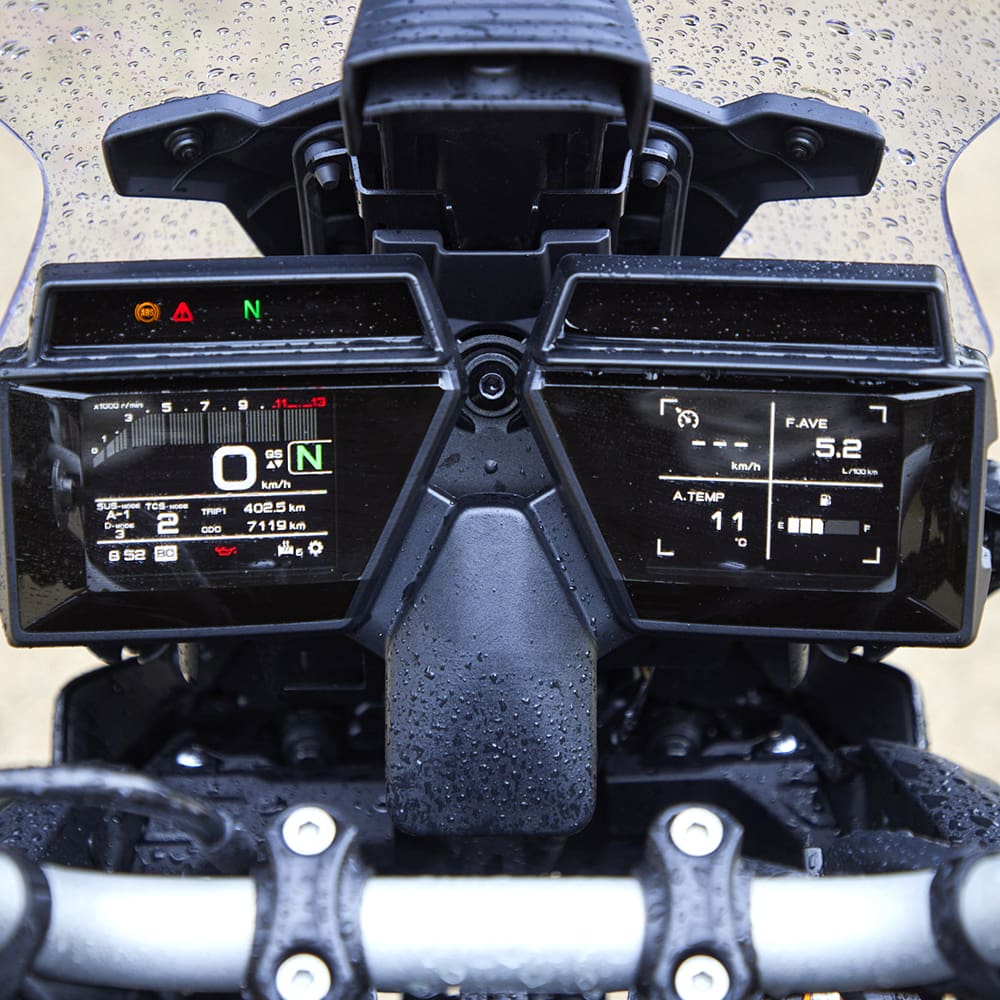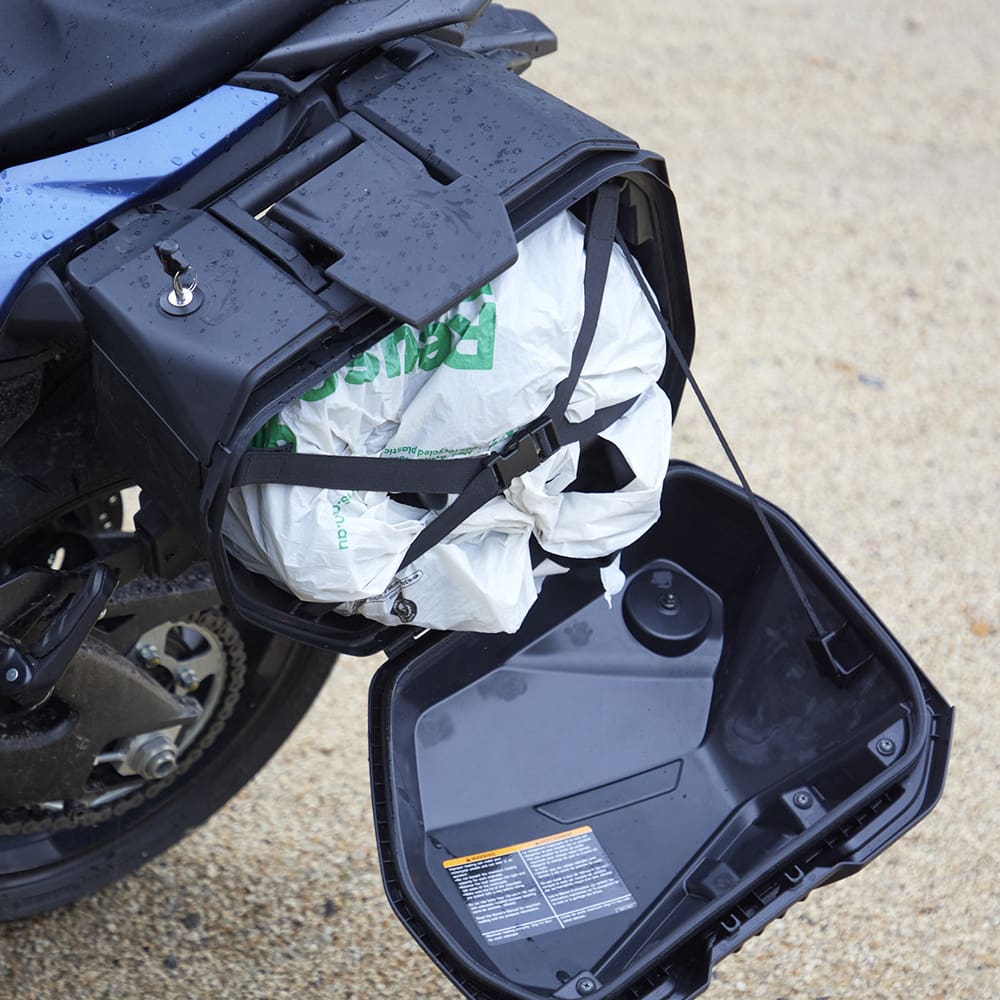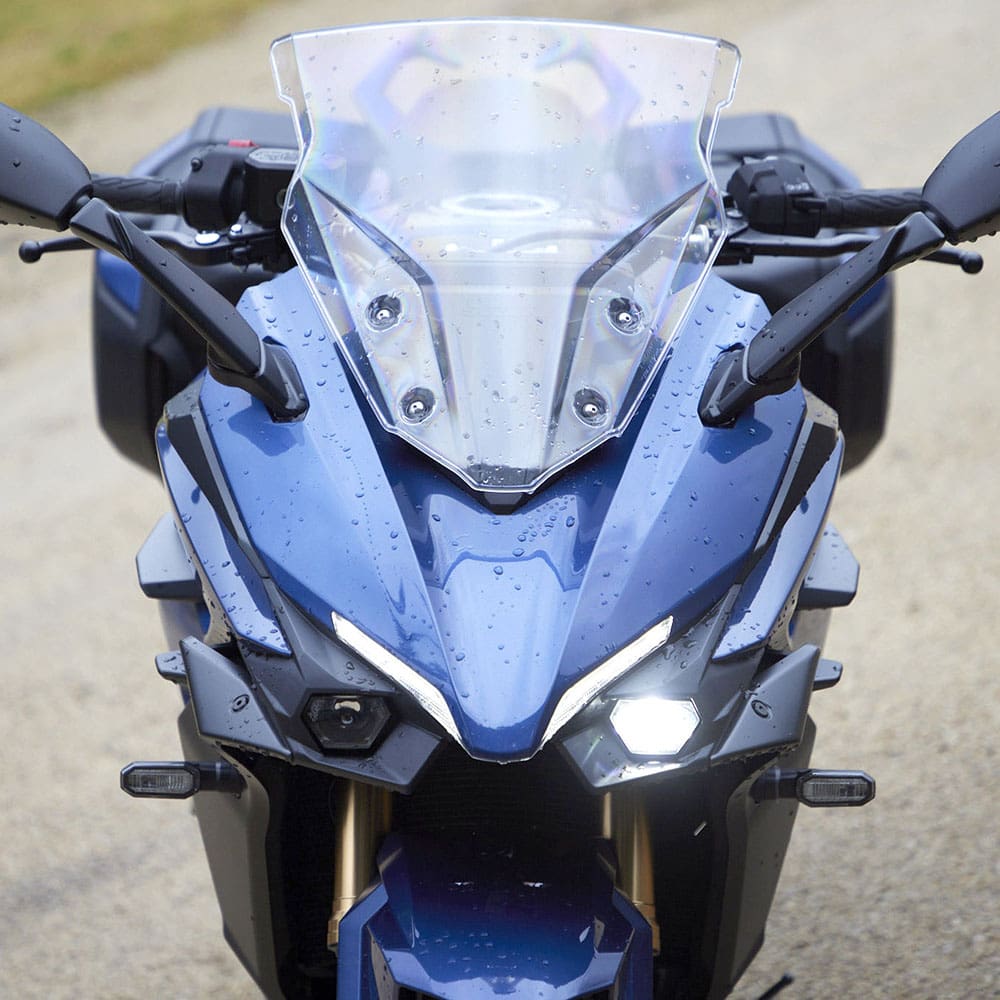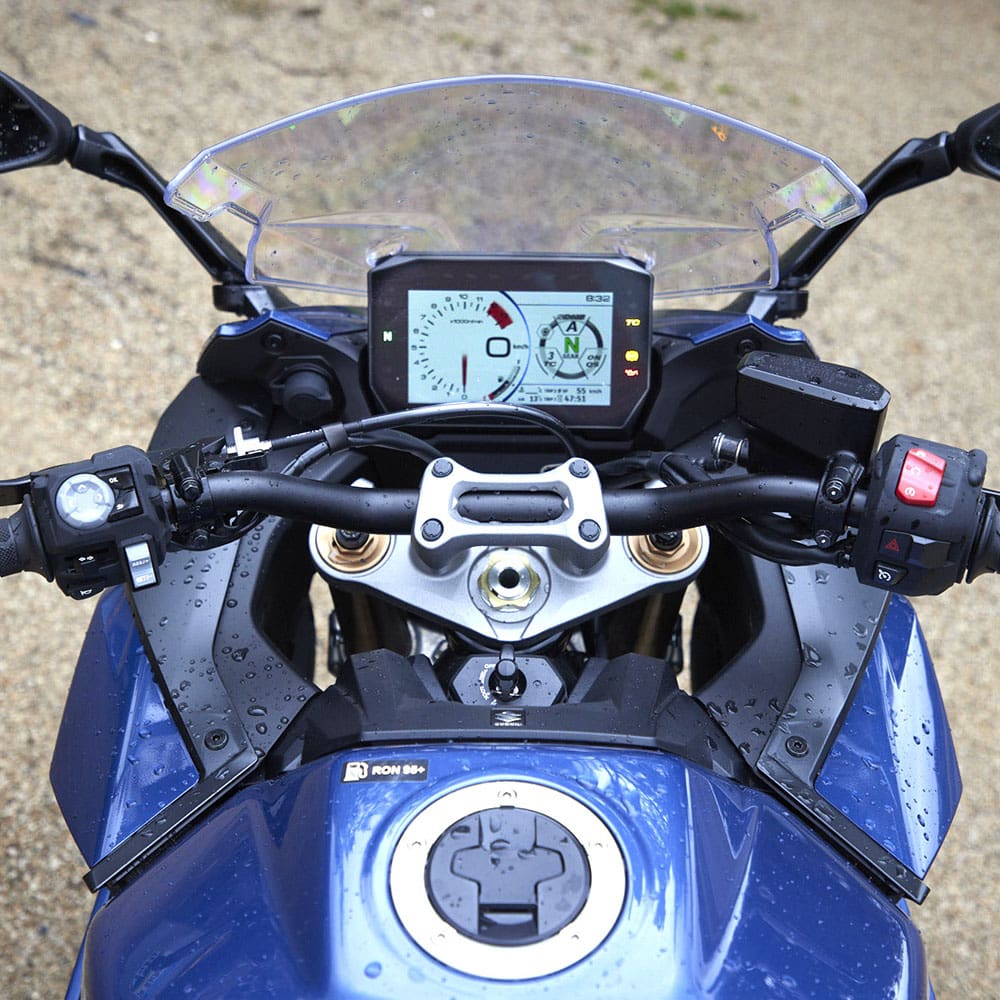Sports-Tourer Comparo: BMW S 1000 XR Triple Black, Honda NT1100A, Kawasaki Ninja H2 SX, Suzuki GSX-S1000GT & Yamaha Tracer 9 GT.
How and why
If you’re over 30 years old, you may remember when sportsbikes and sports-tourers ruled the motorcycling landscape. The 90s were arguably the purple patch for sports-tourers and legendary names like VFR, Bandit, FZR and ZZ-R cemented themselves into sports-tourer folklore. As good as those bikes were, you may also remember that until recently, buying a sports-tourer sometimes meant buying a bike with relatively average suspension performance, sub-par handling and brakes, and often with a donor engine that had been detuned to ensure most of the thrill had been chased out of it.
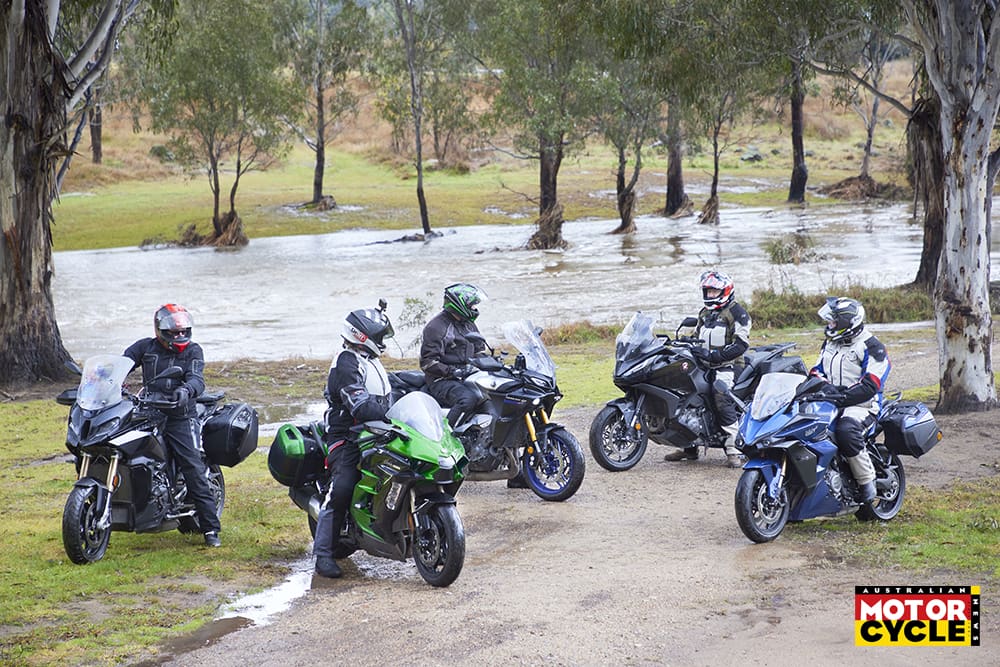
But times have change and owning a sports-tourer is no longer such a compromise when it comes to performance – the new crop are seriously competent machines that in the right hands don’t give a lot away to sportier machinery. The modern sports tourer may have changed, but the fundamentals of a good one remains in place – a solid amount of power, a comfortable ride and some sporting ability. The good news is that the modern crop do all of that better, and have improved in numerous other ways, too, like comfort and styling.
The modern sports-tourer comes in two flavours these days. There are the conventional fully faired units and the adventure-esque variants that have replaced bikes like Suzuki’s Bandit 1200 or Honda’s VTR1000F Firestorm. These adventure-bike wannabes look similar to their off-road orientated brethren, but feature 17-inch wheels, road tyres and road-spec suspension travel. So they don’t have the sporty looks of your traditional fully faired sports-tourer, but what they lack in sex appeal they more than make up for in comfort.

We were able to gather an excellent representative sample of the current crop of mile-munching machines and although adventure bikes seem to steal the majority of the limelight these days, we’re actually very, very spoilt for choice in the sports-tourer category.
We gathered five bikes together for AMCN’s 2022 sports-tourer comparo; BMW’s S 1000 XR, which BMW actually lists as an adventure bike, but if the Beemer is an adventure bike, then I’m an African prince who would like to deposit two-billion dollars in your bank account for safe keeping. Added to the line-up is Honda’s all new NT1100, Kawasaki’s supercharged Ninja H2 SX, Suzuki’s GSX-S1000GT and Yamaha’s Tracer 9 GT.
It used to be the case that almost every sports-tourer was powered by some donor engine from the marque’s range – sometimes strangled to death in the name of extracting more torque. That tradition continues and every bike on this test is fitted with a retuned version of some other bike’s engine – The BMW is powered by the S 1000 RR sportsbike engine, the Honda by the Africa Twin’s donk, the Kawasaki by a Ninja H2 derivative, the Suzuki is powered by the legendary K5-K6 GSX-R1000 engine and the Yamaha by the loony MT-09’s inline-triple.
But engine qualities aren’t everything and the bike with the most power doesn’t guarantee a win in this comparo. Handling, braking, rider and pillion comfort, technology, luggage-carrying capacity and price all need to combine to make a great sports-touring package.

A lot is expected of a sports-tourer and so apart from riding the wheels off them in everything from pock-marked roads in bucketing down rain to well-maintained twisty roads under glistening blue skies, we’ve also provided other titbits like rider triangle measurements, dimensions and fuel consumption figures – we also even measured front and rear weight bias as well as total weight as tested, but a technical issue killed that plan.
Prices for the steeds on test range from $19,090 (ride away) for the GSX-S1000 GT through to $32,160 (plus on-road costs) for the Ninja H2 SX. It’s worth noting that the $23,999 Tracer 9 GT (ride away) is the only bike here that features panniers as standard fitment.
There are obviously many bikes that should be included in this test that aren’t, and that’s simply because they weren’t available at the time. Worthy mentions in the sports-touring category are BMW’s R 1250 RS, Ducati’s SuperSport 950 and base-model Multistradas, KTM’s 1290 Super Duke GT, Kawasaki has at least another three contenders in the class – the Versys 1000, Ninja 1000 SX, and the Ninja ZX-14R, MV Agusta’s Turismo Veloce, Suzuki has the third-generation Hayabusa, Yamaha has the FJR1300 and of course there’s Triumph’s Tiger 950 GT.

We took to the roads to the west of Sydney putting the bikes through their paces over some of the best bike roads NSW has to offer. Day one was a rain-fest, but the sun pushed through giving us dry roads to play with the next day so we had the opportunity to punt the machines through the varied conditions that the regular rider will encounter.
So which bike earned the gong for the best sports-tourer on test? Good question. Read on.

What’s what

BMW S 1000 XR Triple Black
999cc inline-four cylinder
$30,130 (plus on-road costs)

Honda NT1100A
1084cc parallel-twin
$21,690 (plus on-road costs)

Kawasaki H2 SX
Supercharged 998cc inline-four cylinder
$32,160 (plus on-road costs)

Suzuki GSX-S1000GT
998cc inline-four cylinder
$19,090 (ride away)

Yamaha Tracer 9 GT
889cc inline triple
$23,999 (ride away)
![]()
Let the test begin
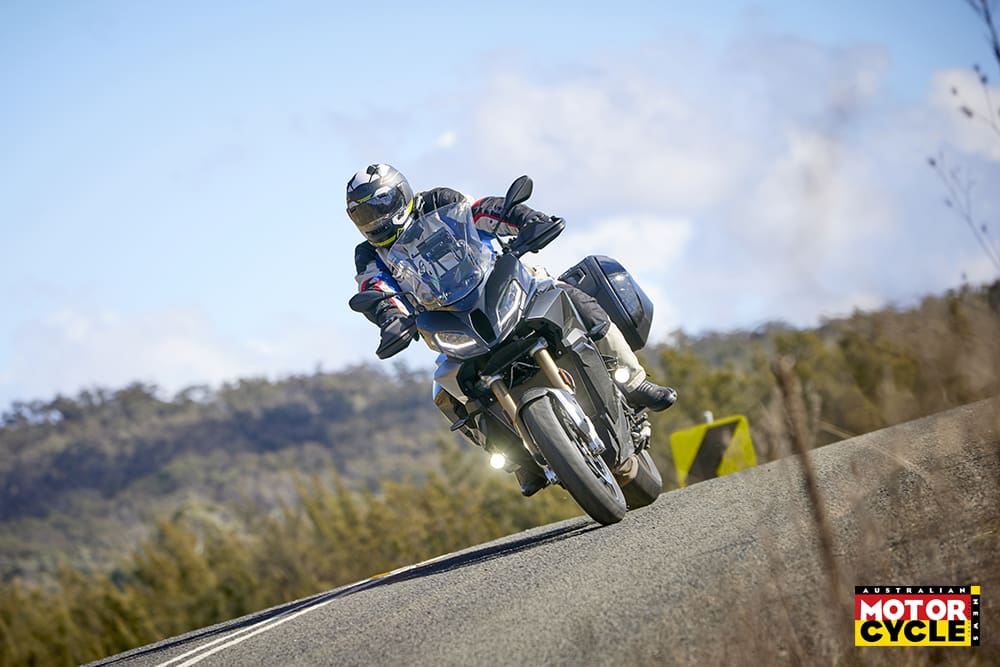
BMW S 1000 XR Triple Black: Dark and Stormy
The XR is built around the older version of BMW’s S 1000 RR 999cc four-cylinder engine, putting out the same 121kW of power and 114Nm of torque as the German marque’s S 1000 R nakedbike.
The engine hits its peak power at 11,000rpm and peak torque comes in at 9250rpm, that’s similar to the other four-cylinder machines on test, but where the Suzuki and Kawasaki have good low- to mid-range grunt, the BMW is asthmatic until you hit the 6000rpm mark. There’s No ShiftCam technology here.
Once spinning over 6000rpm, though, the engine is a missile. It’s pure sportsbike and needs to be ridden as such – keep it on the boil and it’s a hoot. But get lazy with the gearbox and it’ll bog down until you either click down or wait long enough for revs to build. There’s a two-way quickshifter fitted, but the lag between changes is such that I can perform a manual change quicker than the quickshifter can.
With a taut chassis and an excellent electronic suspension package, the XR scores high in the handling stakes. It’s the nimblest steerer of the bunch without being twitchy or nervous in a turn, but lacks the rock-solid feel of the others. But there’s also a finesse to the suspension that the others can’t match – it’s so flickable and happy in a corner, I reckon the XR is as good as anything in a tight and twisty dogfight.
The XR is packed with technology and features, hill start assists, dynamic electronic suspension, cruise control, and heated grips. There are four ride modes (Rain, Road, Dynamic and Dynamic Pro) each effecting the intervention of the cornering ABS, cornering traction control, throttle response and suspension performance. All this is controlled from a big bright TFT screen and switchblock button set up that’s the best in the business.
A set of Brembo radial calipers grip a set of 320mm discs, while on the back a dual-piston Brembo caliper squeezes a 265mm disc. That’s proper Supersport type stuff, but the reality is that the front brake lever’s initial travel lacks feeling and bite that is soon follow by an instant and overly enthusiast bite that can unsettle the bike and your nerves, especially in the wet. The rear brake lacks feel and needs more power, but it’s acceptable. Experience tells me this could be a pad or bleed issue, I’ve never experienced it on any other BMW, so I reckon it could be rectified fairly easily.
The seat is wafer-thin and really not befitting of a sports-tourer perch, but the scalloped shape is supportive. At $30,130 (plus on road costs) and with another $1642.58 for the panniers, it’s in the upper price bracket for a sports-tourer, but you get what you pay for and the BMW is packed with quality components, fantastic handling and the best tech going.
![]()
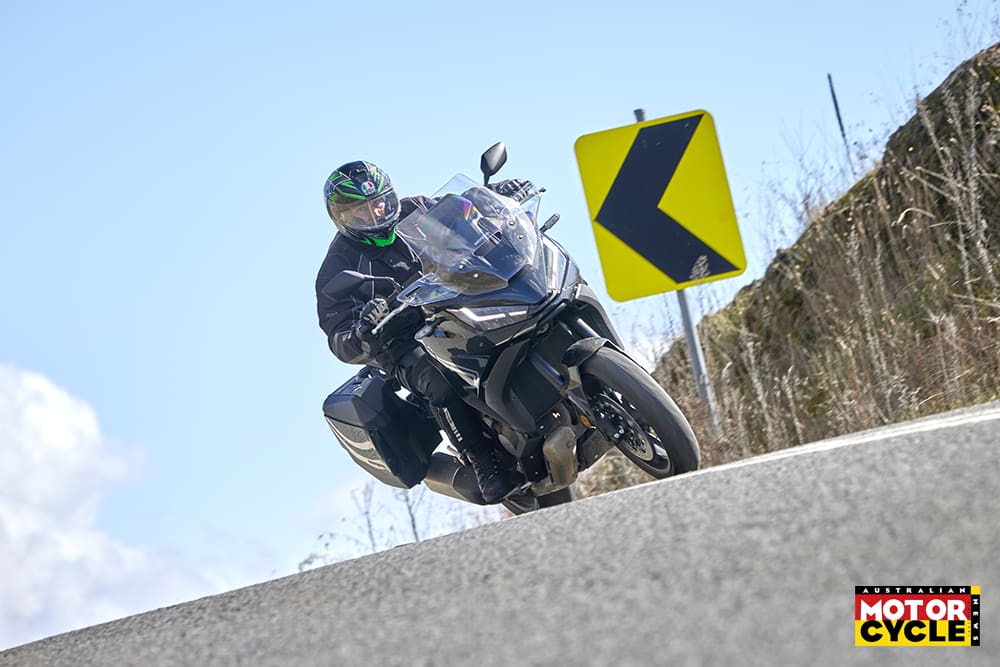
Honda NT1100A: Easy street
Some call it boring, others call it excellent engineering, I’m talking about Honda’s knack of building bikes that are so refined they’re almost sterilised of character. I don’t believe that a piece of machinery can have a character so I’ll just say that Honda has built a sports-tourer that can do everything well but excels at nothing. Actually, it’s excellent at the bit of the sports-touring equation.
There’s nothing substantial to pick on on Honda’s new NT. Although the left-hand switch block nearly caused me to have a button-inspired meltdown, ___need to explain.
The NT’s parallel twin is extracted straight from the Africa Twin and is available with either the six-speed DCT or the run of the mill six-speed manual, which we have on test. The 1084cc powerplant makes 75kW of power at 7500rpm, that’s 12.5kW less than the Yamaha’s 889cc triple, but bests the Yamaha on torque at 104Nm at 6250rpm.
I didn’t want to like the engine, it’s just not powerful or brutish enough. But in reality, it’s a cracking engine for its intended purpose. It hits its performance marks just where it’s needed on a sports-tourer; it’ll grunt along in any gear, you can be lazy through the ’box, and you only really need to drop back a cog if you’ve got a big stretch of overtaking to do at highway speeds.
The NT’s Showa suspension is rudimentary in comparison to the rest of the bikes on test, with preload and rebound adjustment on the front and preload only on the rear, but somehow in typical Honda fashion, it just works. You can feel it’s not at the level of the other bikes, but it still provides a comfortable ride, it’s just less refined.
Handling is neutral, predictable and will do everything you ask of it. It’s only when the pace steps above what the police would consider kosher does chucking the NT around become hard work.
It’s much the same story with the brakes, they do the job well, they aren’t exceptional, but do their job in a pleasingly efficient manner.
For a $21,690 (plus on-road costs) machine, you get a fair whack of electronic aids for your money. Cornering ABS, traction control, wheelie control, three pre-set ride modes (Urban, Rain and Tour) and two customisable modes keep you in control.
And cruise control, heated grips, a wide fairing, a large manually adjustable screen with winglets to keep the elements from your digits all adds to an already hugely comfortable upright riding position. The NT has a roomy cockpit, the seat-to-peg measurement won’t leave six-footers cramped and the reasonable 820mm seat height shouldn’t leave the short-statured folk flapping in the breeze.
The TFT dash with additional LCD display is nicked straight from the Africa Twin but, again, does the job. But the left-hand switchblock has more buttons than a male stripper’s tracksuit pants and the menu is harder than it needs to be to navigate. That’s not a problem unique to Honda, though. Despite the panniers being optional and costing a hefty $2277.74, the NT1100 is the best touring package of the group. It won’t get you where you’re going as quick as the others, but there’s a good chance you’ll get there in better comfort.
![]()

Kawasaki H2 SX: Blown away
If you find yourself constantly running late, you might consider purchasing Kawasaki’s Ninja H2 SX.
With 154.1kW of power and 137.3Nm of torque, it honestly makes the other bikes feel sluggish. The four-cylinder supercharged 998cc powerplant is mental in the best of ways, there’s a customisable speed limiter that, if you have a fondness for your licence, you would do well to set. You will never struggle to overtake anything, never have to tap down on the quickshifter to get it moving but, as fast as it is, it’s as docile as you want it to be. The Ninja isn’t a one trick pony, and it’s loaded with credentials to party with the best in the sports-tourer class from comfort through to technology.
The riding position is the sportiest of the bunch and places a small amount of weight on your wrists. There is plenty of room to move around in the cockpit with a good tank shape that allows you to lock your knees in when things get sporty.
The full fairing provides excellent protection and even does a decent job of keeping road spray off your boots. At 186cm tall I can easily get down behind the non-adjustable screen but, if you need more protection there’s a bigger screen available. The seat height is an accessible 820mm but there’s a low seat option, which is important when you’re teetering on top of a 266kg motorcycle.
The Ninja has a suite of electronics, rider aids and features that put it at the top of the class including a front and rear radar system that controls the adaptive cruise control and blind spot detection, while a six-axis IMU controls cornering ABS and traction control, launch control, wheelie control and hill hold control. There’s a two-way quickshifter, heated grips and cruise control. Info is displayed on a bright 6.5-inch TFT and once you get used to the interface and backlit switchblocks, the menu is pretty user friendly. The dash is equipped with Bluetooth connectivity and allows you connect and control your smartphone and intercom via Kawasaki’s SPIN app or from the screen.
The Ninja is the heaviest bike of the test, but it’s a good handler and especially in fast, open sweepers. But start chasing the lighter bikes in tighter sections and the extra kilos make themselves known; you’re working harder to get the bike turned and washing speed off with the capable Tokico brakes.
The $1917 panniers on test are optional accessories and shaped to work in with the lines of the bike, but because of that shape aren’t as versatile as some of the others.
The Ninja is blindingly fast, loaded with every gadget you could ever need to get you to wherever you’re off to at maximum velocity, and in a great deal of comfort. It’s a very hard bike to fault, on top of its blistering performance it’s the best finished bike in the group with deep paintwork and a menacing stance. But with a ride-away price of something approaching $38K with panniers, it’d want to be.
![]()
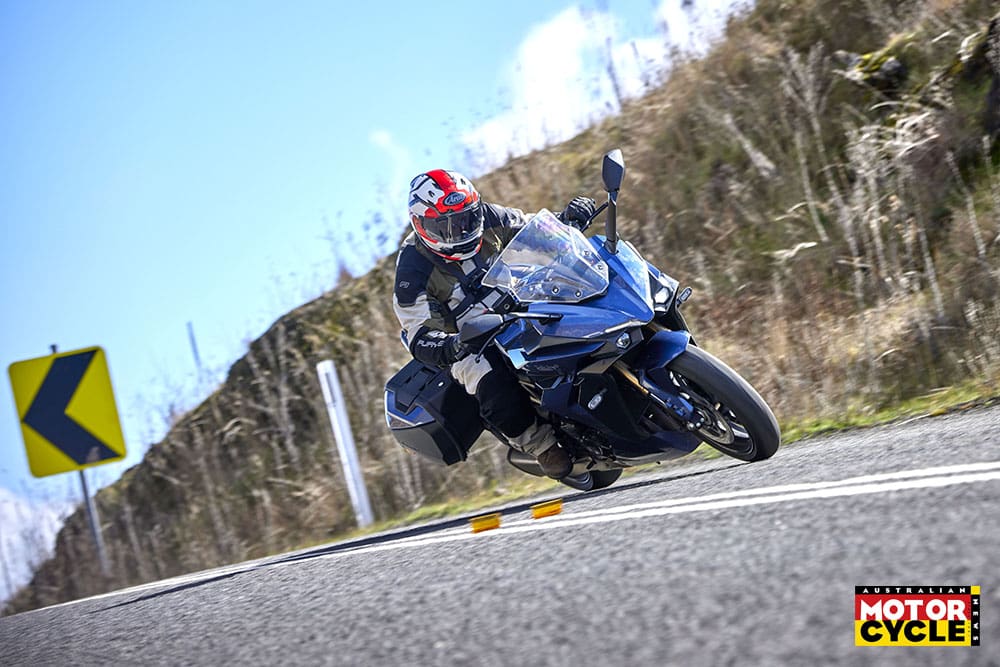
Suzuki GSX-S1000GT: The sleeper
Suzuki’s GSX-S1000GT is the perfect example of why e should never, ever judge a book by its cover. A look at the specs sheet and price tag suggests it’ll be outshone by other bikes on this test and is included to merely make up the numbers. Wrong, wrong, wrong!
The GSX-S1000GT’s 998cc four-cylinder powerplant can trace its lineage all the way back to the much-loved K5 GSX-R1000. It’s a fantastic mill and, with a claimed 112kW at 11,000rpm and 106Nm of torque at 9250rpm, it can still hold its own all of these years on. Compare it to the BMW and Kawasaki and it starts to its age and feels less refined.
Like most fours, it’s happy to rev, but if there’s one attribute the K5 GSX-R was famous for, it was low-down grunt and the GSX-S certainly retains that. It can’t compete with the BMW for top-end power but under 6000rpm, the Suzuki walks away from it with ease. Slamming through the typically beautiful six-speed gearbox is made all the easier with the two-way quickshifter, which is one of the best in the business: precise, buttery smooth and fast.
With a price tag under $20,000 you got to trim the fat somewhere, and the electronics package is one area where that’s obvious. There’s no cornering traction control or ABS, there’s certainly no radar. You do get three ride modes (A, B and C) and you can adjust the ABS and traction control intervention, as well as engine output, to you liking within each mode. many will see this as disappointing, but with the exception of cornering enabled traction control and ABS as far as I’m concerned you can keep your blind spot whatsits and adaptive thingy-ma-jigs.
The GSX-S is very comfortable, and the seating position is quite upright. There’s decent protection from both fairing and the screen considering its aggressive-looking front end. The seat and ergos are excellent and, overall, the GSX-S is no less comfortable than any of the others, with the exception of the Honda perhaps.
It’s a nice average report card for the GSX-S right up until you hit a set of decent corners. At that stage the GSX gets a boost to the top of the class. The BMW will outhandle the Suzuki in some situations, it’s more agile and has better suspension performance, but the difference isn’t massive and the GSX-S1000GT has a level of feel and feedback from the front end that the BMW can’t match.
In all conditions, the GSX-S is so confidence inspiring that you don’t even realise you’re going into corners quicker than on the others until you glance at the speedo. For a sports-tourer, it makes damn fine sportsbike. It does lack a few farkles; all the other bikes have a centrestand and heated grips as standard, the GSX-S doesn’t. Still, even after you’ve fitted a set of heated grips and the optional $1689.88 panniers, you’ll still be riding into the sunset for under $22,000K on one of the most complete sports-tourers available.
![]()

Yamaha Tracer 9 GT: Three bags full
Along with Yamaha’s MT-09, the Tracer copped a major overhaul from Yamaha in 2021 and the outcome of that was a motorcycle with more power and torque and far better handling and brakes.
Much like the GSX-S1000GT and the NT1100, the Tracer is a jack-of-all-trades that does everything very well at a very reasonable $23,999 (ride away). Unlike the other two though, the Tracer is loaded with electronics that include a six-axis IMU-controlled cornering traction control system, slide control, wheelie control, cornering lights, cruise control, semi-active suspension, cornering brake control and a two-way quickshifter. It’s also the only bike in the bunch to come with panniers as standard.
The 889cc inline triple puts out the same claimed 87.5kW at 10,000rpm and 93Nm of torque at 7000rpm as the MT-09, but the heavier 220kg (wet) weight of the Tracer does take some shine off the powerplant. It lacks the crazy wheely ability of its slimmer sibling.
But just like its slimmer sibling, the fuelling can be a bit abrupt when you first pick up the throttle in mode 1, so I tend to stick with mode 2 which gives you full power but a smoother throttle response.
The KYB semi-active electronic suspension responds in real time to road conditions basing its algorithms on which of the four ride modes (1,2,3 or 4) you’re in. It lacks the refinement of the BMW’s electronic suspension, but it’s pretty good for the money.
Handling is neutral, it’s easy to tip into a corner thanks to the wide ’bars. The upright riding position takes weight of the front end and, like the Honda, takes some of the feel out of the front end which zaps your confidence to really push the front. The Tracer also drags its footpegs without too much effort. Yes, I am heavier than average, but on a bike capable of travelling two-up and carrying luggage it may be a concern at some stage.
Braking is decent, there’s plenty of feel front the front and the rear, and there’s plenty of power from the R1-style front calipers. The fairing, coupled with the manually adjustable screen that won’t be wining and design awards, provides good weather protection. It does vibrate at highways speeds which can be annoying. Nestled below the screen is an archaic-looking dash with a small readout that difficult to read at speed.
The comfortable upright seating position lets you oversee what’s happening ahead of you and the seat itself, which has a low (810mm) and high (825mm) setting, is well shaped and nicely padded. The pillion seat looks like the most comfortable of the bunch and if you’re not dragging someone around, it’s a handy and generous space to strap gear.
The Tracer is a perfectly capable sports tourer that lies more on the tourer end of the sports-tourer spectrum. It’s all-day comfortable and packed with a lot of goodies for the price, but it’s just a bit bland. If it captured some of the MT-09’s larrikin spirit, it would be some much more interesting. Still, The Tracer 9 GT is a sports-tourer you don’t need to spend another cent on. Pay your $24k and you’re set to go with everything you need.
![]()
Chicken dinner

And the winner is… Suzuki GSX-S1000GT, take a bow
The Suzuki GSX-S1000 GT lacks some of the fruit of the other bikes in this shootout but look at how much bike you get for that sub-$20k price! And yes, it’s not as powerful nor refined as the Ninja H2 SX or the BMW S 1000 XR, but that 998cc inline four is a ripper of an engine… and it’s housed in a chassis that will put a smile on your dial every time you see a yellow sign with a squiggly arrow on it. Suspension refinement isn’t up there with the BMW, but the Suzuki inspires front-end confidence like no other. And as well as carving up the twisties, you can still tour on this bike all day long.
In fact, it’s almost laughable at just how successfully Suzuki has transformed what is essentially a nakedbike into a sports-tourer. Throw on a fairing and a big comfy seat with grabrails, offer some panniers… and voila!
Of course, a centrestand and some heated grips would have been nice too, but throw a couple of well-chosen accessories at the GSX-S1000 GT and you will have what we reckon is one of the best sports-tourers on the market… and for far less coin than some of the more fancied competition.
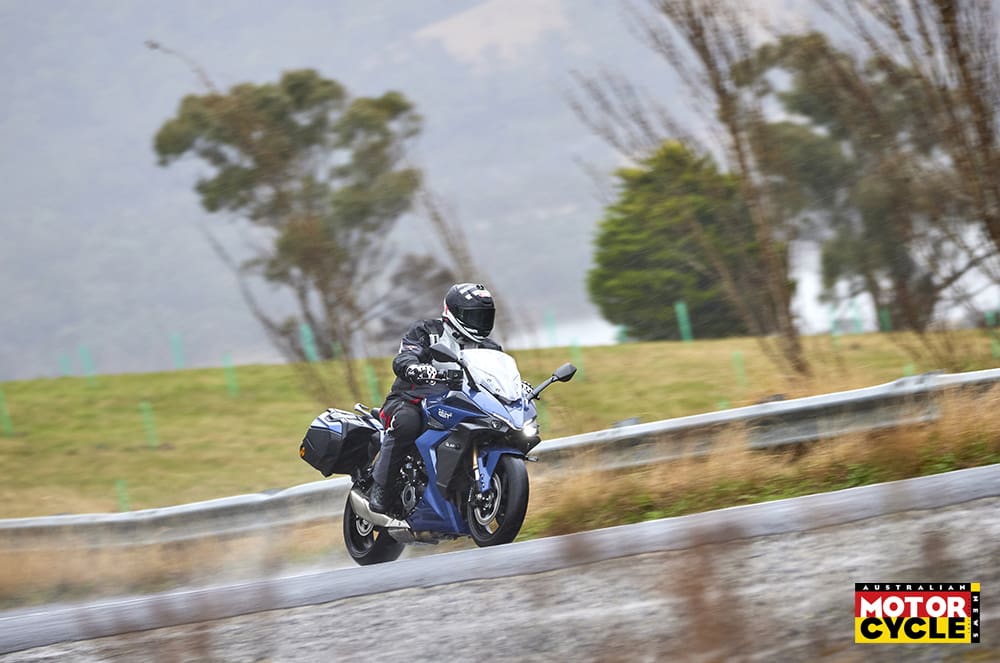
That’s a wrap
Sports-tourers have come along way and there isn’t a dud bike in this bunch. Rain, hail or shine they’re all great bikes that have their own strengths and weaknesses, but the essentials of what makes a capable sports-tourer are all there and has some leaning closer to the sporty end, with others erring towards the touring side of things.
I have a fondness for some of the old sports-touring bikes like VFR750s, ZZR-1100s, FZR1000s and even the oddball Suzuki RF900. But if you think little has changed in this genre and your old mount is just as good as the new breed, I’m afraid you are sadly mistaken. Because as well as not having to fashion some makeshift cruise control or hack your wiring to bits to fit heated grips, they are faster and safer due to electronics. You may think you can do without traction control on your VTR1000F, and you probably can, but see how you go without it on a Ninja H2 SX with 200 horses at the rear wheel.
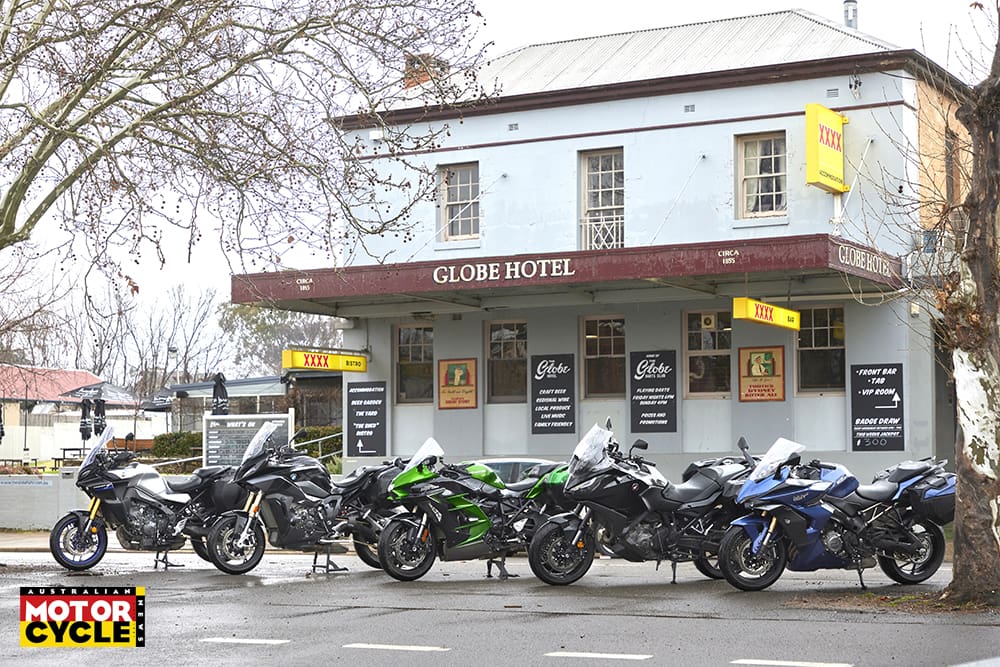
Sports-tourers need to be able to perform in all weather conditions and features like traction control and ABS just make all conditions so much more manageable, allowing you to concentrate on the scenery you’re travelling through.
We’ve chosen a winner but any one of these contenders could be a winner depending on the style of riding you do. If your coming off of a Supersport bike, a race-bred four-cylinder sports-tourer like the S 1000 XR with its peaky power delivery and nimble handling may really float your boat. The difference between the Tracer 9 GT and the NT1100 is so hazy it may come down to price, brand allegiance or fondness for gadgetry. And if you love the fully faired look, then the GSX-S1000 GT or rocket ship Ninja H2 SX could be for you.
If it was my hard-earned and I had enough of it, I’d be putting my money on the H2. It’s a monster, it’s got every gadget you could ever want, it handles well for a bike weighing 266kg and the sound of the supercharger is to die for. But putting my narrow band of desires aside, there is only one bike that hits the sports-touring nail on the head, combining comfort, impeccable handling, a legendary engine and enough electronics to help without taking the joy out of riding. And everyone agreed.
TEST // PETE VORST
PHOTOGRAPHY // JOSH EVANS
